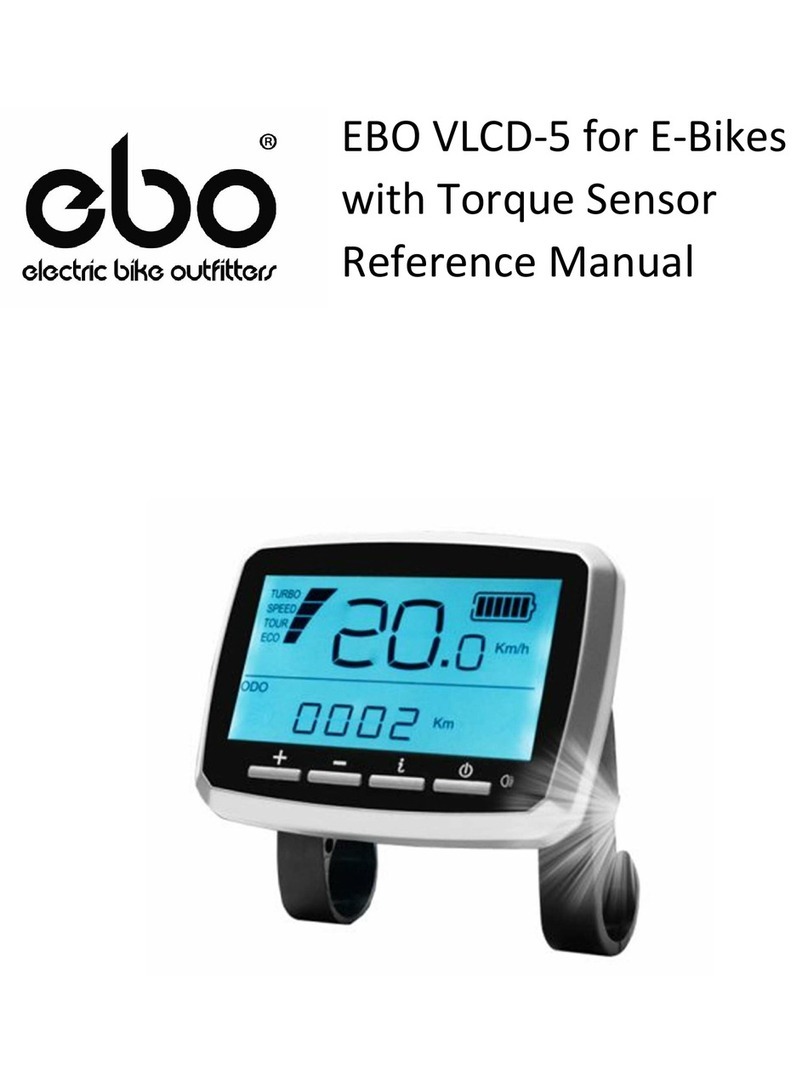
FUNCTION OVERVIEW
KT-LCD3 provides a variety of functions such as electric bike controls and electric bike
status digitally displayed to meet the trip demands.
Trip time display (with displays of a single trip time (TM) and total trip time (TTM));
Trip speed display (with displays of real-time speed (Km/H or MPH) and a single
maximum speed (MXS) and a single average speed (AVS));
Trip distance display (with displays of a single trip distance (DST) and total trip distance
(ODO));
Functions of throttle;
Functions of pedal assist system;
Pedal Assist Level (ASSIST);
6Km/H power walk ( ) function;
Cruise function (CRUISE);
Battery capacity indicator ( );
Real-time battery voltage (VOL) display;
Motor power and temperature (MOTOR) display;
Brake display ( );
Turn on backlighting and lights ( );
Environment temperature (°C or °F) display;
Data clearing;
Fault code display;
User Parameter setting
24V, 36V, 48V supply voltage can automatic identification and be compatible
DISPLAY CONTENT
Pedal Assist Level and
Cruise Function
Battery Capacity
Indicator
Trip Time and
Total Trip Time
Trip Distance or Real-time
Battery Voltage
Motor Operation Power (Watts)
or Motor Run Temperature




























